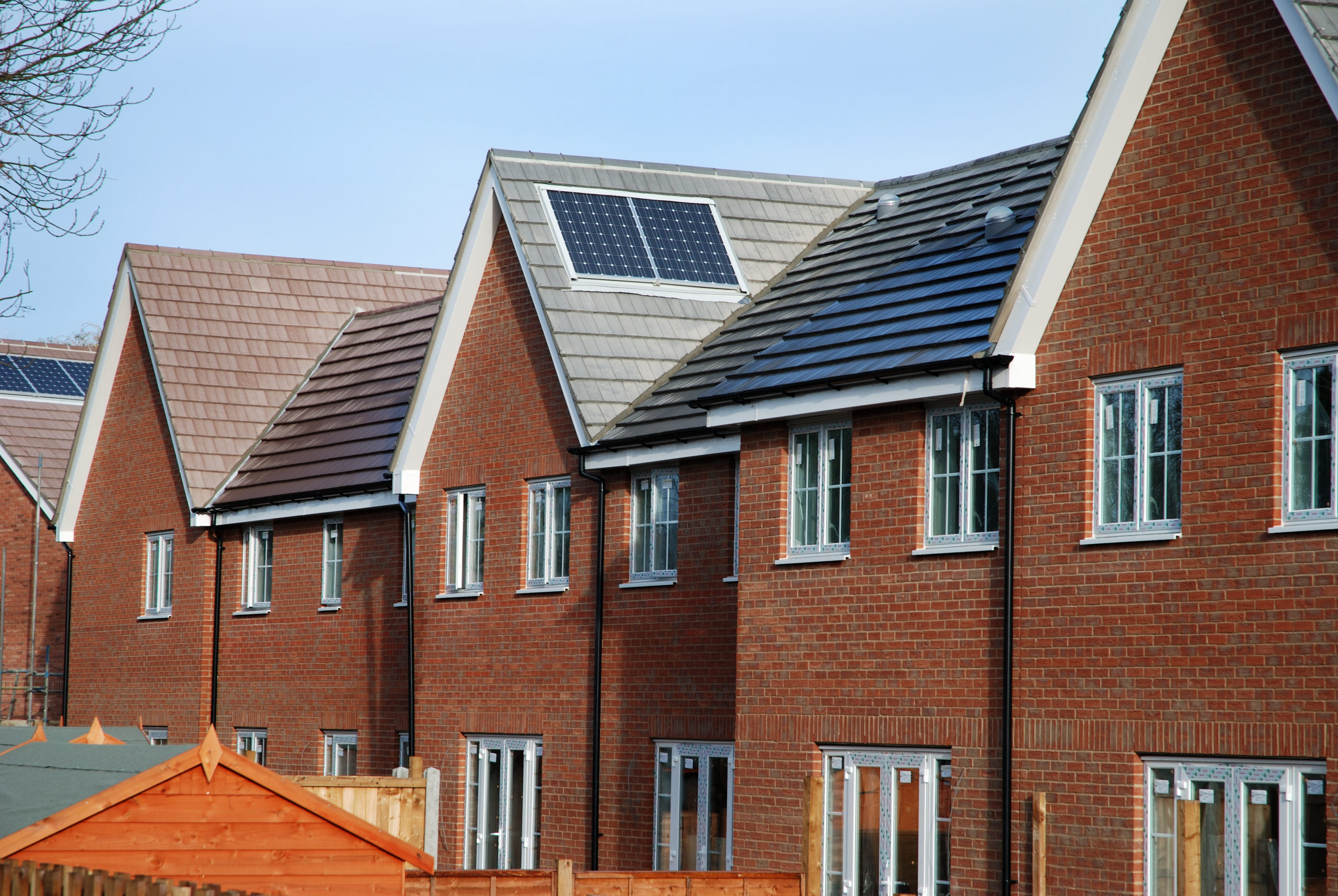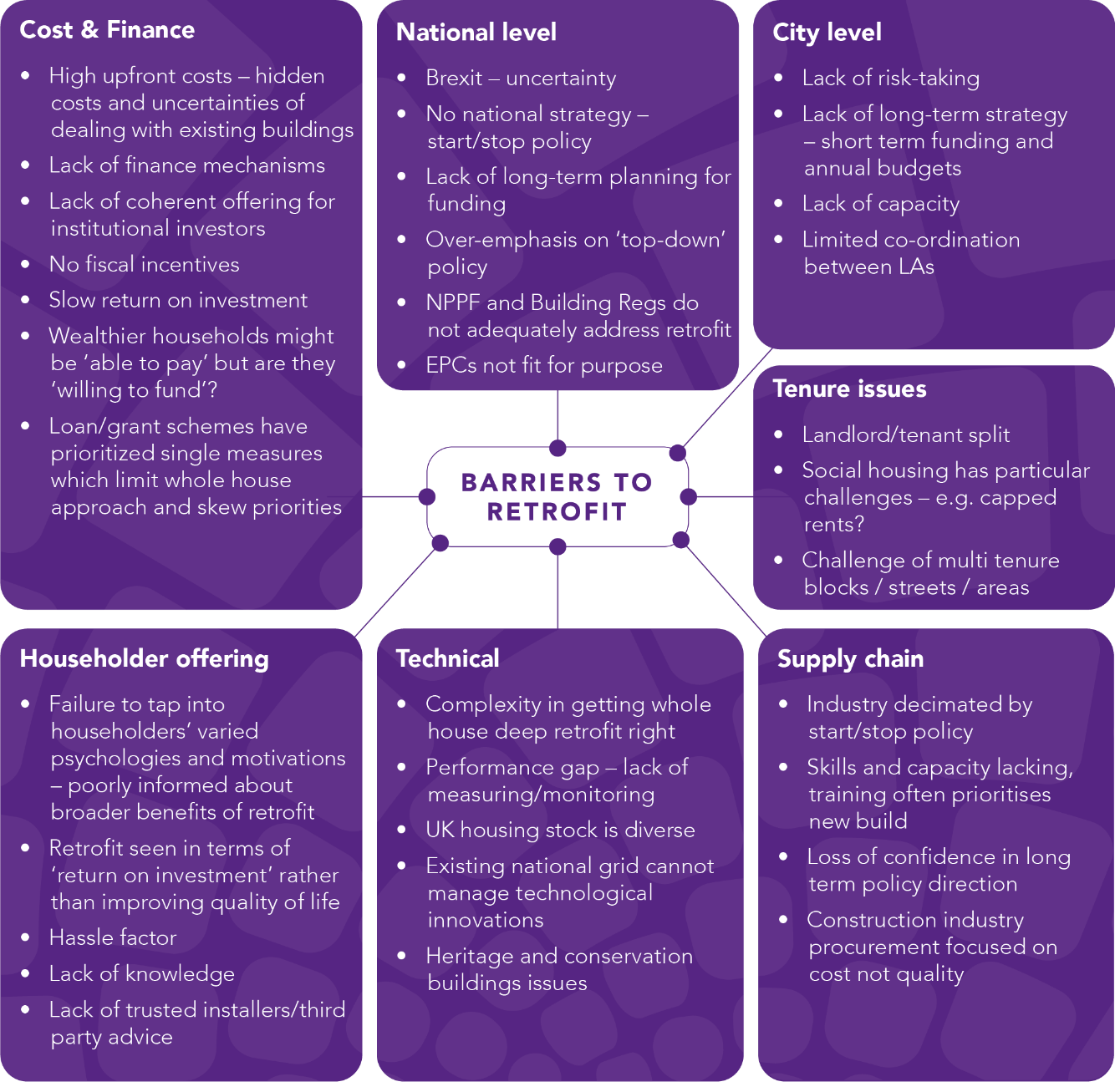
Funding retrofit: challenge and opportunity
The condition of our existing built environment continues to be the real challenge in reaching our net zero targets.
Some of the key areas housing associations (HAs) need to overcome in particular are:
- Capital cost – The capital of refurbishment can be significant. HAs often need to prioritise critical maintenance, fire safety measures and the growth of new housing stock before improving the quality of their existing stock.
- Long payback periods and “who gains?” – The improvements made to homes often result in modest cost savings relative to the capital injection required. Also, the benefit of this saving for HAs would also ideally be passed on to the tenant to address fuel poverty and wider benefits around the wellbeing and mental health of their tenants. This draws any benefit away from the HA.
- Loan securitisation – The challenges around securitisation of loans against refurbishment is a significant barrier for HAs.
- Lack of tenant appetite – Tenants may resist the introduction of new, unfamiliar technologies.
The viability of forming an attractive business case around retrofit is challenging in the current UK market. The key to achieving an attractive model would be:
- Government subsidies required to stimulate the market and drive costs down whilst improving skills and manufacturing efficiencies. Following this maturity, funding could be gradually withdrawn. Such efficiencies have already been realised by Energiesprong in the Netherlands.
- Access to low interest capital. Low interest rate borrowing can drive up project returns. Such bonds already exist on the market, most recently by Tesco PLC issuing a sustainability-linked bond with an interest rate of 0.375%. These should be linked to key performance metrics. While today’s common language for HAs is EPC ratings, this must shift towards energy and carbon intensity metrics, demonstrated as part of HA Environmental & Social Governance reporting.
- Stronger government policy around retrofit.
- Any retrofit must be combined with building owner engagement and education in order to realise the benefits of new technologies.
- Capital cost – The capital of refurbishment can be significant. HAs often need to prioritise critical maintenance, fire safety measures and the growth of new housing stock before improving the quality of their existing stock.
- Long payback periods and “who gains?” – The improvements made to homes often result in modest cost savings relative to the capital injection required. Also, the benefit of this saving for HAs would also ideally be passed on to the tenant to address fuel poverty and wider benefits around the wellbeing and mental health of their tenants. This draws any benefit away from the HA.
- Lack of economic stimulus – Lack of subsidy or historic failure of subsidy schemes has resulted in a lack of economic stimulus.
- Loan securitisation – The challenges around securitisation of loans against refurbishment is a significant barrier for HAs.
- Supply chain – lack of consistent long-term retrofit at scale has resulted in a relatively small supply chain and skill set in the UK
- Lack of engagement or knowledge – Tenants will resist the introduction of new, unfamiliar technologies. This is particularly true of the HA sector.
- COVID-19 – Renewable & insulation industries have undoubtedly been hindered by COVID-19 and increased uncertainty.
Infographic: Retrofit Playbook, UKGBC

